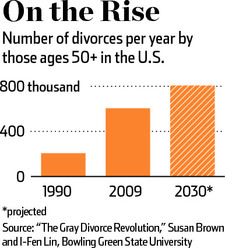
Because of our great medical facilities, people often say that Minnesota might be the best place in the world to get sick. What is less known is that Minnesota is rapidly becoming known as the best place for an ailing marriage too. Indeed, just as people travel all over the world to come to the Mayo Clinic to heal their bodies, people from around the world occasionally travel to Minnesota to observe the ways that we heal conflict.
Last month, two family law attorneys from Cape Town, South Africa, spent most of the month of May at the Collaborative Alliance in Edina, observing many of our Collaborative divorce professionals so that they can improve the way family conflict is handled in their country. Two weeks earlier, a family law attorney from Rio de Janeiro, Brazil, visited the Collaborative Alliance space and asked if she could also send an observer from her country in the upcoming months. Indeed, we have hosted family law professionals from five different countries and nearly every state during the past six years.
I realize that, if you have a healthy marriage, finding that Minnesota is a great place for a divorce may not be reason to jump up for joy. No one wants to be in the position to need a divorce lawyer anymore than anyone wants to need a good oncologist. But, if you are facing serious problems, it’s nice to know you can reach out and find some of the very best in the world.
So, why is Minnesota an international leader in handling conflict? Is it because of our superior laws, our better courts, better law schools are lawyers? Well, in fact, while all of those things are very good in our state, the thing that is causing people to travel to Minnesota from afar is our innovation. Divorce causes great pain around the world and nearly everyone is desperate to find a better way. Minnesota is, among other things, the birthplace of Collaborative Law, a method of handling divorce that has spared tens of thousands of families. To learn more about Collaborative Practice, go to
www.collaborativelaw.org.
As someone who has handled hundreds of Collaborative divorce (as well as hundreds of traditional divorces), I am not surprised that people from around the United States would want to learn about this better method. However, I admit that I was a bit surprised to learn that about the great interest all around the world. I have had the opportunity to conduct workshops and trainings on Collaborative law throughout the world and I have observed great differences in their laws and in their cultural norms. What has surprised me is that, when it comes to basic issues, protecting children, reducing conflict, reducing costs we are all facing the same issue. Collaborative Divorce is more effective, not because of something unique to Minnesotan or Americans, but because if makes divorce more human. And that is a language that is understood all around the world.
 Recently I received a referral from Kristin, a client I represented in 2011 in her collaborative divorce. In thanking her for the referral, I took the opportunity to ask her how she was doing. With her permission, her response is reproduced below. At the time of her divorce, Kristin and her husband had two (2) children ages 10 and 12.
Hi Tonda,
Nice to hear from you. I will fill you in with some detail for examples of what can lay on the other side of divorce to help you give hope to your clients going through this painful process. Everyone is doing well here; the kids are doing really well splitting their time between our 2 households (4 miles apart).
Tom and I have a much better relationship now than when we were getting divorced. We talk several times per week and text, usually daily, mostly regarding kids’ stuff like coordinating activities/homework and just general parenting issues. We also try to meet for coffee sometimes to discuss things more in depth like holidays and vacation planning and kids’ milestones. We see each other at their basketball games, tennis matches, orchestra concerts, etc, even holidays sometimes, and usually sit together with our new spouses. Tom and I both got re-married a couple of months ago and Tom and his wife are expecting a baby in March. I married a pharmacist that I met after the divorce and we got married in Yosemite in August of this year. The four of us get along well and the kids get along well with both our spouses so I have nothing but great things to say about the collaborative process. It really helped us to avoid a lot of un-pleasantries and keep our family together without staying married, which is really great.
I hope all is well with you and your practice. I will continue to recommend people look into collaborative divorce as an option. It has been very helpful to us to use the divorce agreement as a structure, but we stay very flexible with rearranging schedules, holidays and vacations etc. We have actually never even had an argument since the divorce. It has helped us build a sense of cooperation and the collaborative process really reinforced putting the kids as the center point for all decisions going forward. One of the things that always stuck in my mind through the whole process was that Tom and I decided that even though we did not have a successful and healthy marriage, we would have a successful and healthy divorce and be successful and healthy parents.
Best,
Kristin
Recently I received a referral from Kristin, a client I represented in 2011 in her collaborative divorce. In thanking her for the referral, I took the opportunity to ask her how she was doing. With her permission, her response is reproduced below. At the time of her divorce, Kristin and her husband had two (2) children ages 10 and 12.
Hi Tonda,
Nice to hear from you. I will fill you in with some detail for examples of what can lay on the other side of divorce to help you give hope to your clients going through this painful process. Everyone is doing well here; the kids are doing really well splitting their time between our 2 households (4 miles apart).
Tom and I have a much better relationship now than when we were getting divorced. We talk several times per week and text, usually daily, mostly regarding kids’ stuff like coordinating activities/homework and just general parenting issues. We also try to meet for coffee sometimes to discuss things more in depth like holidays and vacation planning and kids’ milestones. We see each other at their basketball games, tennis matches, orchestra concerts, etc, even holidays sometimes, and usually sit together with our new spouses. Tom and I both got re-married a couple of months ago and Tom and his wife are expecting a baby in March. I married a pharmacist that I met after the divorce and we got married in Yosemite in August of this year. The four of us get along well and the kids get along well with both our spouses so I have nothing but great things to say about the collaborative process. It really helped us to avoid a lot of un-pleasantries and keep our family together without staying married, which is really great.
I hope all is well with you and your practice. I will continue to recommend people look into collaborative divorce as an option. It has been very helpful to us to use the divorce agreement as a structure, but we stay very flexible with rearranging schedules, holidays and vacations etc. We have actually never even had an argument since the divorce. It has helped us build a sense of cooperation and the collaborative process really reinforced putting the kids as the center point for all decisions going forward. One of the things that always stuck in my mind through the whole process was that Tom and I decided that even though we did not have a successful and healthy marriage, we would have a successful and healthy divorce and be successful and healthy parents.
Best,
Kristin  Recently I received a referral from Kristin, a client I represented in 2011 in her collaborative divorce. In thanking her for the referral, I took the opportunity to ask her how she was doing. With her permission, her response is reproduced below. At the time of her divorce, Kristin and her husband had two (2) children ages 10 and 12.
Hi Tonda,
Nice to hear from you. I will fill you in with some detail for examples of what can lay on the other side of divorce to help you give hope to your clients going through this painful process. Everyone is doing well here; the kids are doing really well splitting their time between our 2 households (4 miles apart).
Tom and I have a much better relationship now than when we were getting divorced. We talk several times per week and text, usually daily, mostly regarding kids’ stuff like coordinating activities/homework and just general parenting issues. We also try to meet for coffee sometimes to discuss things more in depth like holidays and vacation planning and kids’ milestones. We see each other at their basketball games, tennis matches, orchestra concerts, etc, even holidays sometimes, and usually sit together with our new spouses. Tom and I both got re-married a couple of months ago and Tom and his wife are expecting a baby in March. I married a pharmacist that I met after the divorce and we got married in Yosemite in August of this year. The four of us get along well and the kids get along well with both our spouses so I have nothing but great things to say about the collaborative process. It really helped us to avoid a lot of un-pleasantries and keep our family together without staying married, which is really great.
I hope all is well with you and your practice. I will continue to recommend people look into collaborative divorce as an option. It has been very helpful to us to use the divorce agreement as a structure, but we stay very flexible with rearranging schedules, holidays and vacations etc. We have actually never even had an argument since the divorce. It has helped us build a sense of cooperation and the collaborative process really reinforced putting the kids as the center point for all decisions going forward. One of the things that always stuck in my mind through the whole process was that Tom and I decided that even though we did not have a successful and healthy marriage, we would have a successful and healthy divorce and be successful and healthy parents.
Best,
Kristin
Recently I received a referral from Kristin, a client I represented in 2011 in her collaborative divorce. In thanking her for the referral, I took the opportunity to ask her how she was doing. With her permission, her response is reproduced below. At the time of her divorce, Kristin and her husband had two (2) children ages 10 and 12.
Hi Tonda,
Nice to hear from you. I will fill you in with some detail for examples of what can lay on the other side of divorce to help you give hope to your clients going through this painful process. Everyone is doing well here; the kids are doing really well splitting their time between our 2 households (4 miles apart).
Tom and I have a much better relationship now than when we were getting divorced. We talk several times per week and text, usually daily, mostly regarding kids’ stuff like coordinating activities/homework and just general parenting issues. We also try to meet for coffee sometimes to discuss things more in depth like holidays and vacation planning and kids’ milestones. We see each other at their basketball games, tennis matches, orchestra concerts, etc, even holidays sometimes, and usually sit together with our new spouses. Tom and I both got re-married a couple of months ago and Tom and his wife are expecting a baby in March. I married a pharmacist that I met after the divorce and we got married in Yosemite in August of this year. The four of us get along well and the kids get along well with both our spouses so I have nothing but great things to say about the collaborative process. It really helped us to avoid a lot of un-pleasantries and keep our family together without staying married, which is really great.
I hope all is well with you and your practice. I will continue to recommend people look into collaborative divorce as an option. It has been very helpful to us to use the divorce agreement as a structure, but we stay very flexible with rearranging schedules, holidays and vacations etc. We have actually never even had an argument since the divorce. It has helped us build a sense of cooperation and the collaborative process really reinforced putting the kids as the center point for all decisions going forward. One of the things that always stuck in my mind through the whole process was that Tom and I decided that even though we did not have a successful and healthy marriage, we would have a successful and healthy divorce and be successful and healthy parents.
Best,
Kristin 









